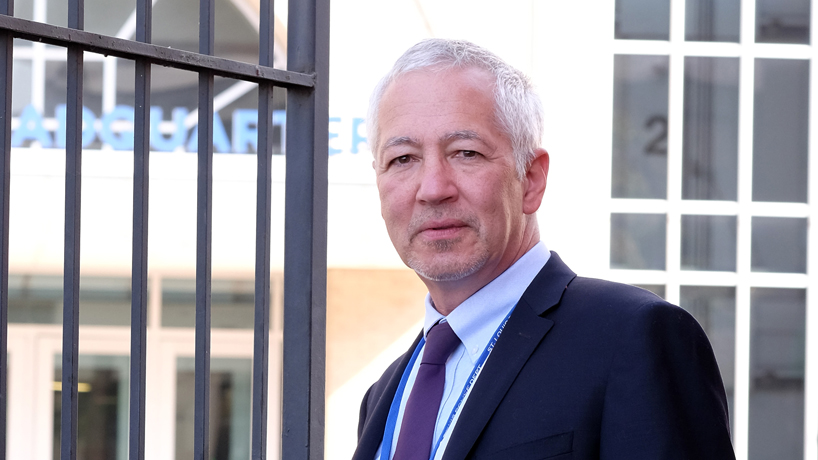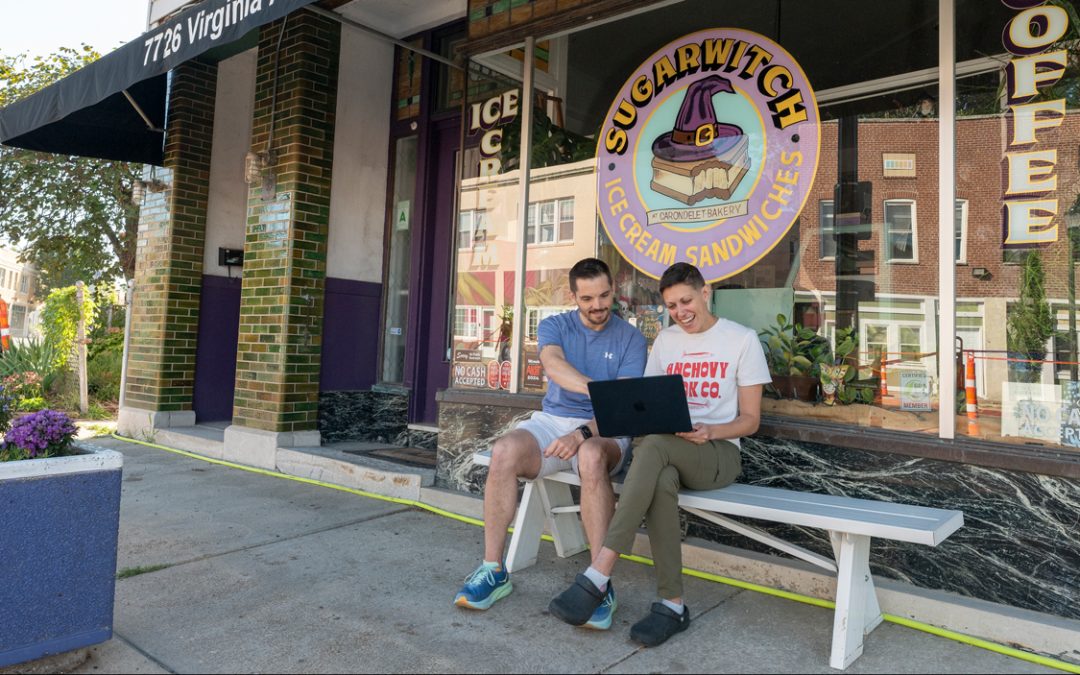
Richard Rosenfeld, a Thomas Jefferson Professor in the Department of Criminology and Criminal Justice, wrote a report for the National Institute of Justice examining plausible explanations for a spike in homicides in 2015. (Photo by August Jennewein)
The headline “Murder Rates Rising Sharply in Many Cities” screamed from the front page of The New York Times on Aug. 31, 2015.
But Richard Rosenfeld, a Thomas Jefferson Professor in the Department of Criminology and Criminal Justice at the University of Missouri–St. Louis, tried to be cautious about reading too much into what ultimately was a look at only 10 cities in the United States barely halfway through the calendar year.
His belief that the country was indeed seeing a sudden and pronounced spike in homicides – which had been trending downward since the early 1990s – grew when he attended a meeting of local police chiefs and mayors, called by the U.S. Attorney General, last fall in Washington, D.C.
“Chief after chief, mayor after mayor said, ‘Our city is experiencing a real crime increase,’” Rosenfeld said recently while sitting in his office in Lucas Hall.
Even then, he knew it would require further research.
As it turned out, Nancy Rodriguez, the director of the National Institute of Justice, asked him to begin doing just that. She approached him at a meeting of the American Society of Criminology in November about preparing a report on the popular discussion and debate about crime rises in 2015 and the possible research implications.
The NIJ – the research, development and evaluation agency of the U.S. Department of Justice – ultimately published Rosenfeld’s work in June in a paper titled “Documenting and Explaining the 2015 Homicide Rise: Research Directions.”
It has been cited often by journalists across in the country in the three months since, including in a New York Times story last Friday detailing a significant increase in homicide rates last year in 25 of the nation’s 100 largest cities.
Rosenfeld focused his study on crime data obtained from the nation’s 55 largest cities, as well as Salt Lake City.
He first confirmed there was evidence supporting the much-discussed homicide increase in those cities in 2015, and that the increases were nearly unprecedented. He found that homicides in them went up an average of 17 percent during the 12-month period.
He also looked more closely at 10 cities – Baltimore, Chicago, Houston, Milwaukee, Cleveland, Washington, Nashville, Philadelphia, Kansas City and St. Louis – that, combined, accounted for two-thirds of the total increase in the 56-city sample.
That would prove useful as he began to test plausible explanations in need of further study.
Given that the increases followed on the heels of relatively long-term declines, he surmised that whatever was pushing instances of homicide up also had to undergo an abrupt change.
So he ruled out more typical explanations, including a change in the age of the population. Younger people tend to commit more crime, but the age of a population shifts much more gradually.
He also dismissed worsening economic conditions, which also don’t typically change that abruptly and were actually shown to be improving during 2015.
Rosenfeld went into detail about three explanations he believes could have contributed to last year’s increases and would like to see researched more:
- An expansion of drug markets
- A decline in imprisonment rates leading to more ex-prisoners and parolees, who have high recidivism rates
- A so-called “Ferguson Effect”
The “Ferguson Effect” really refers to two different ideas.
One is that in the wake of high-profile and controversial instances of police use of force, as happened in 2014 with the shooting of Michael Brown in Ferguson, Missouri, departments have pulled back their enforcement efforts amid concerns about legal liability or having officers’ pictures plastered across social media. That creates an opportunity for crime to increase.
St. Louis Metropolitan Police Department Chief Samuel Dotson III, who first coined the phrase “Ferguson Effect,” seemed to be referring to another explanation. That is one in which long-standing discontentment with law enforcement – which has been highest in disadvantaged African American communities – is activated by incidents such as the shooting of Brown, making citizens less likely to call the police when they witness a crime or cooperate with detectives during an investigation.
Rosenfeld, who had written with skepticism about the idea of a “Ferguson Effect,” was convinced through his research that the phenomenon is real and, in fact, might, in one or both of its forms, be the best explanation for the rise in homicides in 2015.
“They’re all plausible. We need better evidence to evaluate all of them,” Rosenfeld said. “But the one advantage of either of the so-called ‘Ferguson Effect’ explanations is they seem to get the timing of the increase right.”
Drug markets had been expanding well before 2015 with the nation dealing with an opioid epidemic, and prison populations began a gradual decline in 2009.
What’s more, the “Ferguson Effect” could fit with shared links between the 10 cities with the largest increases. Rosenfeld’s research showed that, in addition to higher poverty rates, those 10 cities all had African American populations of at least 40 percent compared to roughly 20 percent in the other cities. They also had relatively low Hispanic populations.
Baltimore, Chicago and Cleveland all dealt with controversy over police use of force within their borders, much like St. Louis experienced after Brown’s death.
Rosenfeld was not counting on his paper receiving so much attention.
“I am surprised and gratified in a way, not necessarily because it’s my work but because there’s clear public interest in this issue,” Rosenfeld said. “That’s all to the good if for no other reason than the more public pressure is brought to bear on the FBI to modernize its crime statistics, the better.”
The chief reason Rosenfeld’s study focuses on data from 56 cities and not information from the roughly 18,000 law enforcement agencies nationwide is that the Uniform Crime Report with those figures from last year isn’t due to be released until later this month.
Rosenfeld believes that can and should change.
“What if we didn’t know the unemployment rate until 10 months after the end of the year and we didn’t know it on a monthly basis?” he said. “Or what if we were tracking a flu epidemic? We track flu epidemics, depending on the epidemic, on a daily or weekly basis.
“If they can do it there, there’s no technical reason these days while we can’t do it with crime data.”
He noted that much of the data from those 18,000 agencies is compiled by individual states which do release figures on a month-by-month basis that the FBI then compiles into the UCR.
More timely release of the nationwide statistics would make it easier for researchers such as Rosenfeld to notice crime trends as they happen. They could then notify policymakers so they could formulate responses that can benefit the public at large.
Media coverage:
The New York Times
The Washington Post
Wall Street Journal
Detroit Free Press
Houston Chronicle
PolitiFact
The Guardian
St. Louis Post-Dispatch
NOLA.com
Governing














